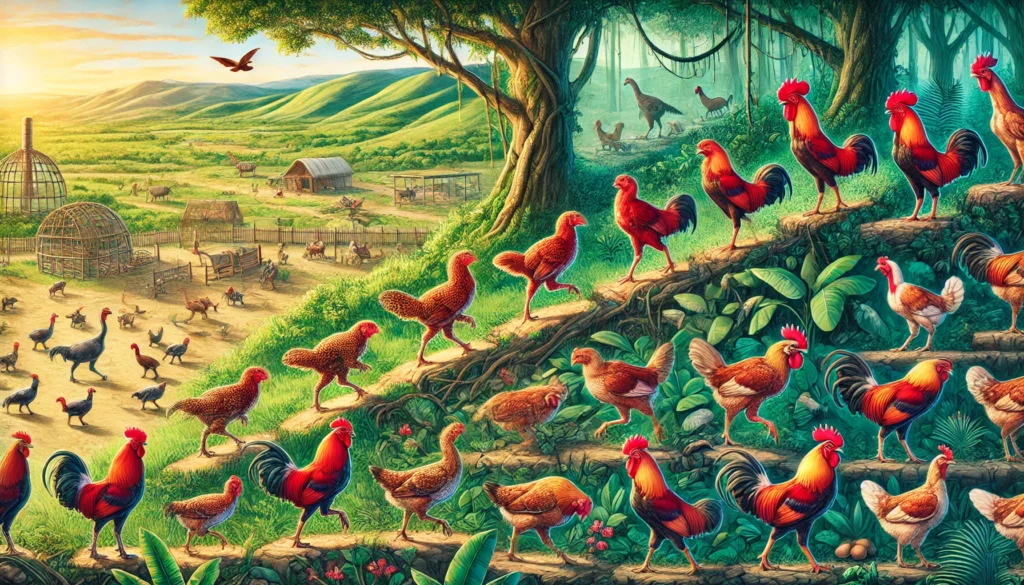Chickens are an integral part of human civilization, contributing not only as a primary source of food but also as a cultural and symbolic entity. The journey of the chicken, from its origins in the wild jungles of Asia to its role in modern agriculture, is a fascinating story that highlights human ingenuity and nature’s adaptability.
The Wild Ancestor: Red Junglefowl
The modern chicken traces its roots back to the red junglefowl (Gallus gallus), a wild bird native to Southeast Asia. Archaeological evidence suggests that humans began domesticating these birds over 7,000 years ago. Initially, chickens were not primarily kept for their meat or eggs but for cockfighting, a popular activity in ancient societies.
Domestication and Spread Across the Globe
Through trade and migration, domesticated chickens spread across the world:
- In China: Chickens were raised as early as 6000 BCE, primarily for ceremonial purposes.
- The Middle East and Europe: By 1500 BCE, chickens reached the Middle East and later Europe, where they became integral to agriculture.
- Africa and the Americas: Chickens were introduced to these regions much later, becoming crucial livestock.
Selective Breeding and Evolution
As humans began raising chickens for specific traits like egg production, size, and temperament, selective breeding played a critical role in shaping modern chicken breeds. This human intervention created the diverse types of chickens we see today, from meat-producing broilers to prolific egg layers.

Cultural Significance of Chickens
Chickens have symbolized fertility, prosperity, and even courage in various cultures:
- In Ancient Egypt: The chicken represented rebirth.
- In Roman Times: Chickens were used in divination practices to predict the future.
- In Modern Times: Chickens hold culinary significance, being a staple in dishes across the globe.
The Timeless Debate: Which Came First, the Chicken or the Egg?
As we explore the history of chickens, we inevitably encounter the age-old question: Which came first, the chicken or the egg? From an evolutionary perspective, the egg predates the chicken, as genetic mutations in a pre-chicken bird led to the first true chicken hatching from an egg.
However, for those who enjoy the lighter side of the debate, such as in the discussion of the “silky chicken,” the paradox becomes a source of humor and philosophical musings rather than a matter requiring scientific resolution.
Conclusion: From Origins to Timeless Questions
The history of the chicken is more than a tale of domestication; it is a reflection of humanity’s relationship with nature. From its humble beginnings as a wild junglefowl to becoming the subject of timeless debates like “Which came first, the chicken or the egg?” chickens have played a significant role in shaping human culture and survival.
Even in modern times, they continue to inspire curiosity, whether it’s about their evolutionary journey or the amusing contemplation of topics like the silkie chicken. The story of chickens reminds us that even the most common creatures can carry a rich and fascinating history, bridging science, culture, and humor.

